
The lithium-ion batteries have some limitations. For one, cost of lithium-ion batteries is increasing year after year, so these are suitable for high-priced mobile items like vehicles and smartphones only. For stationary applications we need to find alternatives.
Second, lithium-ion batteries can handle a few thousand charge/discharge cycles only. This means the batteries need to be replaced after about five years of use.
Third, re-cycling of lithium-ion batteries is challenging and expensive. Also, India does not have lithium mines, so we are completely dependent on imports.
Fourth, lithium-ion batteries also use metals like nickel and cobalt. Therefore, these batteries are not environment-friendly. Besides, lot of mining is required to get these metals.
Hence, it becomes important to explore other devices for energy storage. Here we will explore use of supercapacitors for energy storage for low power but widespread applications.
Supercapacitors (or ultracapacitors) are also called electric double-layer capacitors. They use porous carbon electrodes and store energy in the form of electric field. Unlike batteries, which store energy in electrochemical form, these offer high-value capacitance, which can be measured in Farads. Typical working voltage of these capacitors is low (2.7V).
As of today, the cost of supercapacitors is high. Just for storing a few watt-hours of energy we have to use several capacitors. Hence, the cost of even small low-power systems is fairly high.
However, there are some ways the cost of supercapacitors can be reduced, a couple of which are suggested below.
This story is from the February 2023 edition of Electronics For You.
Start your 7-day Magzter GOLD free trial to access thousands of curated premium stories, and 9,000+ magazines and newspapers.
Already a subscriber ? Sign In
This story is from the February 2023 edition of Electronics For You.
Start your 7-day Magzter GOLD free trial to access thousands of curated premium stories, and 9,000+ magazines and newspapers.
Already a subscriber? Sign In

ESP32-Powered AUDIO-VISUAL SIREN
This sound alternator is designed to simulate the effects of a police siren, combining sound and light to create a dynamic audio-visual experience.
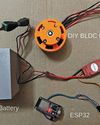
BLDC MOTOR With Web-Based Speed Control Using ESP32
Integrating wireless control into brushless direct current (BLDC) motor systems opens up exciting possibilities for applications such as remote-controlled cars, robots, and other innovative systems.
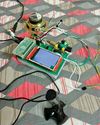
Pi Zero Portable BILINGUAL TRANSLATOR
This system is designed as a bilingual translator, leveraging the gTTS library to support multiple Indian languages, including English (en), Bengali (bn), Gujarati (gu), Hindi (hi), Kannada (kn), Malayalam (ml), Marathi (mr), Tamil (ta), Telugu (te), and Urdu (ur).
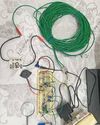
Op-Amp-Based VEHICLE THEFT DETECTOR
A simple, low-cost device can effectively alert homeowners or occupants if a parked vehicle is moved or tampered with.

loT SMART METER With Dashboard
Energy meters in homes track electricity usage, enabling accurate billing by governments and providers.

Choose The Right Cloud Platform For Implementing loT PROTOCOLS
Working with loT protocols like MQTT, AMQP, and CoAP on cloud platforms is essential for developing scalable and efficient lol applications. The choice of the programming platform will depend on factors like project requirements, existing skills, and target devices. Leveraging the appropriate libraries and cloud services can enable seamless integration of lol devices with cloud-based applications.

Why TMR SENSORS Lead Next-Generation Design
TMR sensors are gaining traction in industries needing precision and power efficiency. What makes them the go-to choice for modern designs?
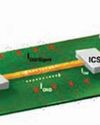
DESIGNING PCBs For EMI Management
Electromagnetic interference can derail your PCB’s performance. EMI management is not just a technical necessity but a hallmark of exceptional PCB design.

CUTTING COSTS, NOT CORNERS: Building Large Scale Applications With Open Source Software
Here are some strategies and best practices for leveraging open source to create enterprise-grade web and mobile applications without sacrificing quality or functionality.
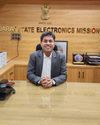
"We Are One Of India's Very Few State Bodies To Manage The Entire Lifecycle Of The Electronics EcosystemFrom Approvals To Subsidies."
What is Gujarat State Electronics Mission GSEM), and how is it attracting major investments in electronics manufacturing, particularly semiconductor manufacturing, to Gujarat? To delve deeper, Electronics For You’s Nijhum Rudra spoke with Manish Gurwani, the head of GSEM. Here is what he revealed...